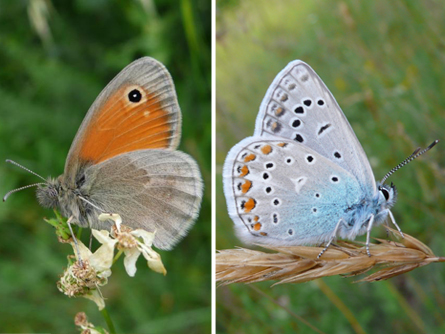A global warming flap
Differences in butterfly and moth breeding patterns are linked to a changing climate
Florian Altermatt likes to chase butterflies. This ecologist — a scientist who studies how creatures interact with their environment — who works at the University of California, Davis. And he thinks that butterflies might have something to tell us about the effects of global warming. In a new study, he and other researchers found a big change in the reproduction pattern of butterflies and moths in Central Europe.

These extra generations didn’t show up in this location before 1980.
The temperature increase, 1.5 degrees, may not seem like much, but it’s about the difference between the body temperature of a healthy person and someone with a low-grade fever. Altermatt suspects that in Central Europe, that extra degree and a half is changing the internal clocks of many butterflies and moths. Because the climate has warmed, their breeding season begins earlier. And this could give the insects more time to mate.
Altermatt notes that the increase in temperature also speeds up the development of the insects. That means they’re ready to reproduce earlier in their lives.
This was no small study: His team watched butterflies and moths outdoors and also looked at historical records for more than 1,100 types of the creatures. Among these, 263 species are known to produce one or two extra generations in the location studied. But not always. This happened only when the temperatures heated up. Since 1980, Altermatt found, most of those species have started adding generations more often.
These added insects might mix things up in the ecosystem of Central Europe, says Patrick Tobin. He’s an ecologist with the U.S. Forest Service in Morgantown, W.Va. An extra generation of insects provides more food to the animals that feed on them. Those predators, in turn, might start to increase their numbers. And that could make life tougher on the species those predators eat, Tobin told Science News. On the other hand, if an endangered insect species was affected, an extra generation each year might give it a better chance of recovering.
Altermatt also does research in evolution, which is the study of how species, or groups of the same creature, change over time. Every time an insect — or animal, plant or other organism — reproduces, the offspring might be slightly different from its parent. These differences could give the offspring a better chance of survival in the world. In this case, Altermatt thinks the additional butterfly generations may speed up evolution. That, too, might give them a better chance of survival in the face of climate change.
Scientists who study the effects of climate change like to look at patterns such as insect populations because they are easy to track — and easy to connect to a warming world. And by studying such visible effects of climate change, scientists might be able to better predict the changes ahead for other populations — like humans.







